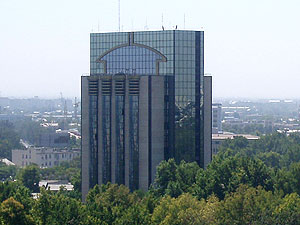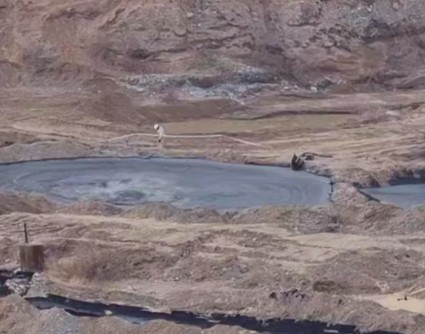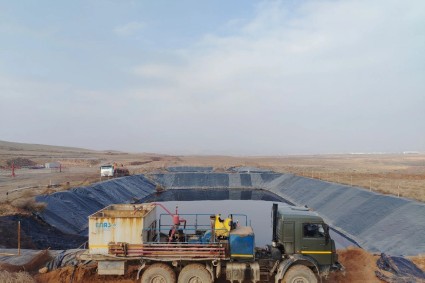The Board of the Central Bank approved a provisional conceptual draft Monetary Policy Guidelines for 2022 and 2023-2024, the Bank said in a statement on Tuesday.
When developing the main axes of monetary policy for 2022 and 2023-2024, first of all, the Central Bank reportedly took into account the goals of ensuring price and financial stability in the economy and reducing inflation to the target level of 5% by the end of 2023.
The Central Bank added that there remains a high degree of uncertainty regarding future changes in external and internal economic conditions. In this regard, the baseline and alternative scenarios were developed given the scale and duration of the impact of medium-term macroeconomic external and internal factors.
When developing these scenarios, changes in external economic conditions, forecasts of international financial institutions for the world economy and prices for main export goods, expected situations in countries - major trading partners and probable trends in domestic economic conditions were taken into account.
The pandemic situation was considered an important criterion in determining the conditions of the scenarios, since the progress of the vaccination process in the world is becoming the main factor determining the rapid recovery of economic growth in developed countries and the relatively slow recovery in developing countries.
In addition, this year, the climate change and the supply of basic food items, financial stability figures, as well as planned reforms and their expected results were taken into account as important factors in the calculations.
Main scenario
In the main scenario of macroeconomic development, a gradual improvement in external and internal economic conditions is expected, without significant external risks. The situation with the pandemic is returning to normal, long-term restrictions on the migration of human resources and cross-border movements will not be introduced.
The conditions of this scenario presume that economic activity will continue to grow at a high rate, as well as that investment and consumer demand will fully recover to the pre-pandemic level.
According to the Central Bank's calculations under this scenario, the gross domestic product in 2022 will reach its potential level and the real rates of economic growth will be 5.5-6.5%, and in 2023-2024 about 6%.
In the main scenario, private domestic and foreign investment and structural reforms in various sectors of the economy are considered as the main driving forces of economic growth.
The objectives of ensuring macroeconomic stability determine the conduct of gradual fiscal consolidation, and in this regard, the overall fiscal deficit is projected to decrease to 2-3% in 2023-2024.
Based on the influence of the above factors and the degree of liberalization of regulated prices, inflation is expected to be 8-9% in 2022 and drop to 5% in 2023-2024.
Alternative scenario
The conditions of the alternative scenario of macroeconomic development are based on such assumptions as the unfavorable external economic conditions as a result of the continued tense situation with the pandemic and the slowdown in economic activity.
According to this scenario, the real growth of the gross domestic product may top 3-4% in 2022. With the transition of the situation to the normal phase, there will be a recovery in economic activity and gross demand from 2023, and it is estimated that real GDP growth in 2023 will be 4.8-5.8%, and in 2024 - 5.5-6. 5%.
At the same time, in order to support domestic economic activity, fiscal stimulus will continue in 2022, and the expected fiscal deficit will be about 4-5% of GDP. Fiscal consolidation will begin in 2023 to ensure macroeconomic stability, and the fiscal deficit is projected to decrease to 3-4% in 2023 and to 2-2.5% of GDP in 2024.
Formation of macroeconomic development under the conditions of the alternative scenario will require postponing the liberalization of regulated prices for future periods, the Central Bank notes. As a result, under this scenario, the headline inflation rate is projected at 7.5-8.5% in 2022 and about 5.6-6.6% in 2023.
In each of the above scenarios, the main goal of monetary policy is to ensure price and financial stability in the economy and achieve the inflation target (target), the regulator emphasizes. In this case, the degree of rigidity of monetary conditions will be determined depending on the formation of the situation inherent in the scenarios.
If monetary policy conditions remain relatively tight in the baseline scenario, then in an alternative scenario, measures could be taken to moderate monetary conditions slightly, as well as to ensure a balance between stimulating the economy to maintain economic activity and price stability.
In the coming years, along with further improvements in operational mechanism and the development of the money market, the Central Bank will focus on measures to implement the next stage of reforms in the domestic foreign exchange market, strengthen the analytical and forecast potential and improve the efficiency of the transmission mechanism of monetary policy.
The task of increasing the efficiency of the transmission mechanism is associated with the development of the financial market, in particular the government securities market, an increase in the size of the private capital market and the development of non-bank institutions of financial intermediation in the economy.
Particular attention should be paid to the elimination of long-term factors of inflation in the coming years, the Central Bank said. First of all, this requires the implementation of such measures as the development of competition in the consumer market, an increase in the production of consumer goods, a decrease in the level of import concentration, the development of trade and service infrastructure in the regions.
Successful implementation of these structural reforms after reaching the target level of inflation will gradually transfer monetary conditions to neutral, the draft concluded.















